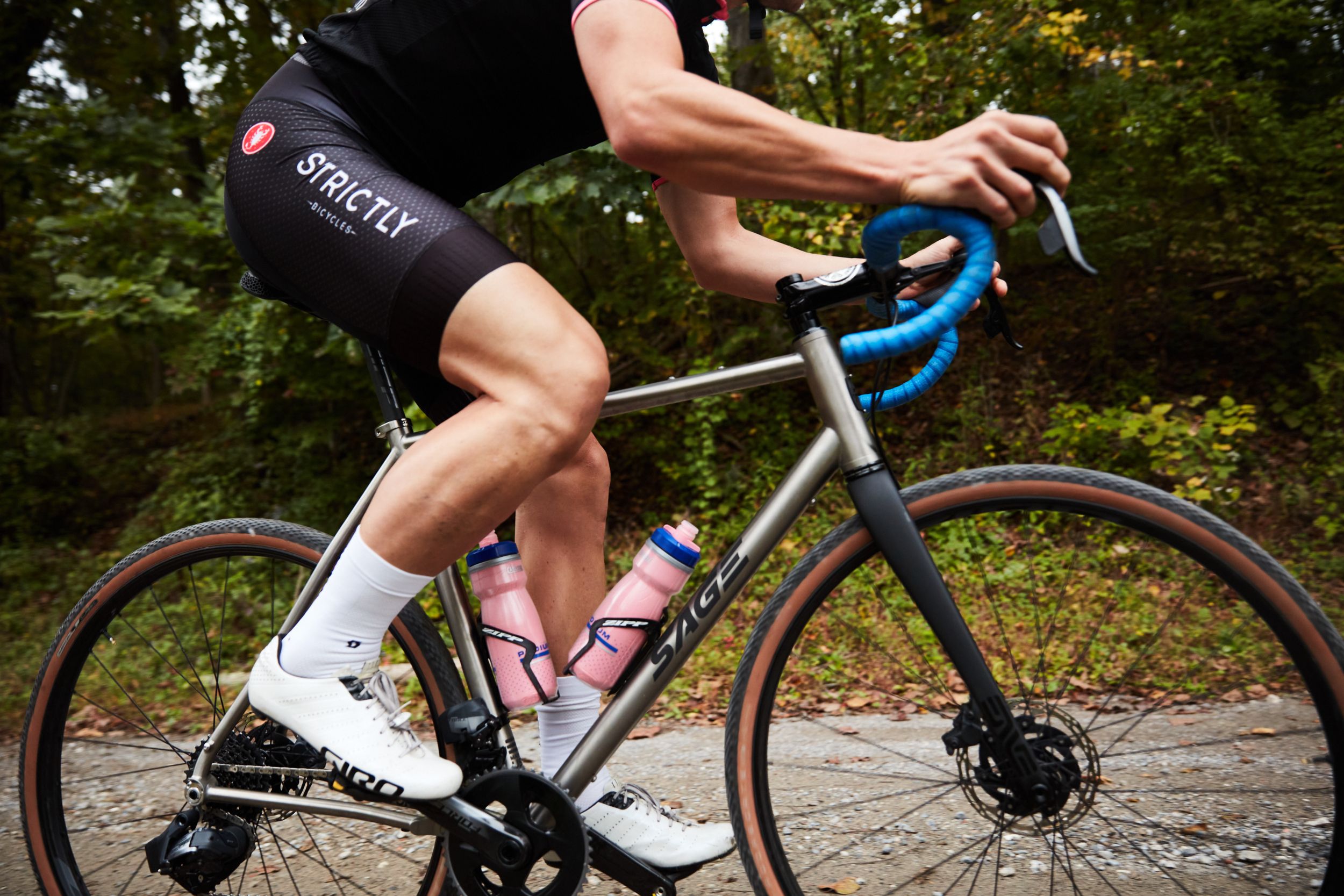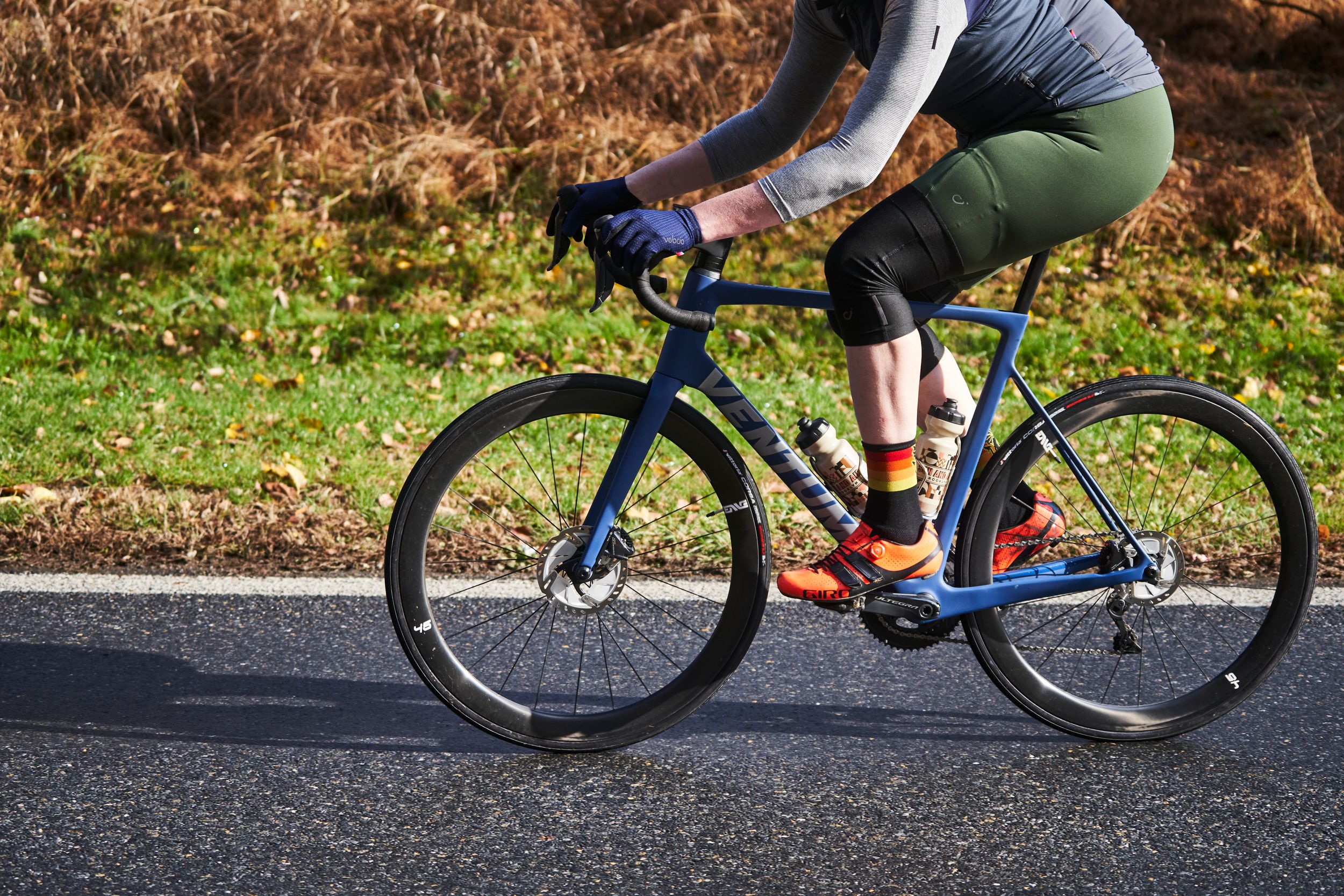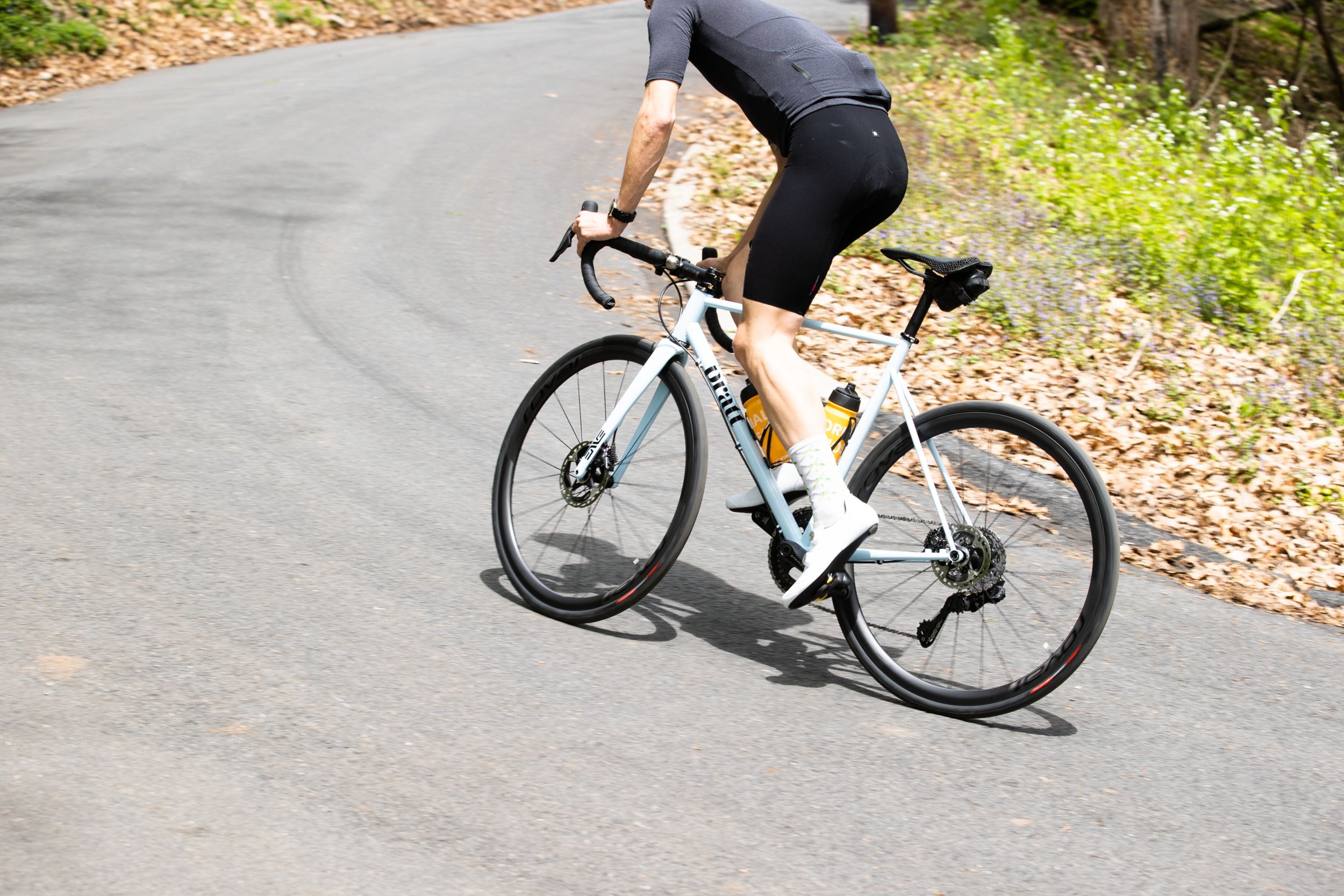4 Simple Cycling Workouts That Build Strength
Use these four laser-focus workouts to improve speed, climbing and muscle imbalance and become a better all-round rider.
You can easily get lost in a sea of training plans, workout videos, and fitness articles flooding the internet with promises of keeping you in shape. That’s because coaching and training advice often trickles down from the professional tiers, where pros need meticulously monitored training to squeeze out every potential watt for even the smallest marginal gains. But for the average rider who would like to improve their fitness, speed, and stamina, cycling workouts don’t need to be overly complicated.
In fact, you just need to start and stick to riding your bike—that lays your foundation. Then, you can build on that base by focusing in on a few key cycling workouts that hone specific skills—and that’s exactly what you’ll get from this list of workouts.
Cycling Workouts #1: Pedal Practice
 You should dedicate some time during your week to address muscle weaknesses and imbalances with low-intensity cycling workouts, like this one designed by Kristen Arnold, M.S., R.D., C.S.S.D., a level 2 USA Cycling-certified coach. “This workout serves as an easy spin, best done on a recovery day, but makes the most of your time by including drills which are low-intensity and highly beneficial to improving pedalling form and efficiency,” she says.
You should dedicate some time during your week to address muscle weaknesses and imbalances with low-intensity cycling workouts, like this one designed by Kristen Arnold, M.S., R.D., C.S.S.D., a level 2 USA Cycling-certified coach. “This workout serves as an easy spin, best done on a recovery day, but makes the most of your time by including drills which are low-intensity and highly beneficial to improving pedalling form and efficiency,” she says.
When to do it: Once a week.
How to do it: Start with a 5-minute cycling warmup at an easy effort, think 2 or 3 rate of perceived exertion (RPE) on a scale of 1 to 10, with 1 being the lowest effort and 10 being all-out. Then, pedal for 1 minute at a rpm between 100-120, while maintaining the same RPE. Rest for 2 minutes, pedalling at a cadence that works for you. Repeat that 1 minute of pedalling at 100-120 for a total of 5 rounds.
Next perform 30-second spin-ups, in which you’ll start at 50 rpm, then ramp to high cadence, increasing your rpms through the full 30 seconds. This should be at an easy effort, says Arnold, and you should pedal fast enough to feel yourself bounce in and out of saddle by the end of that 30 seconds. Rest for 2 minutes, cycling at any cadence. Repeat those spin-ups for a total of 5 rounds.
Next, perform 5 minutes of spinning at a 2 or 3 RPE. Then perform 10 minutes of single-leg drills: Start pedalling one leg at a time, and complete as many rotations you can without compromising form. Then switch to the other leg.
Finally, cool down with 5 minutes of pedalling at an RPE of 1 or 2.
Cycling Workouts #2: Tabata
 Named after exercise scientist Izumi Tabata, these all-out efforts train your body to recruit maximum muscle fibres and to fire them faster, as well as raise your lactate threshold, which makes even your hardest rides feel easier. They also help you hang onto your precious fitness when time is tight and you can’t squeeze in longer days in the saddle.
Named after exercise scientist Izumi Tabata, these all-out efforts train your body to recruit maximum muscle fibres and to fire them faster, as well as raise your lactate threshold, which makes even your hardest rides feel easier. They also help you hang onto your precious fitness when time is tight and you can’t squeeze in longer days in the saddle.
Because they’re super short, it’s also easy to psyche yourself up for them (one set takes just four minutes, which includes the rest intervals). Adding them to your usual training can help you see improvements fast. In a study published in the Journal of Sport Science & Medicine, exercisers who added just one high-intensity interval session, like Tabatas, to their usual moderate cardio-training routine improved their VO2 max by 10 percent, compared to a 3.9-percent improvement among their peers doing a similar amount of moderate training alone.
When to do it: Once a week
How to do it: Start with a 5- to 10-minute spin warmup at an easy effort. Next, pedal as hard as possible (try to reach your maximum power output) for 20 seconds. Then pedal soft for 10 seconds, allowing your heart rate to come back down slightly. Repeat 8 times. Rest for 4 to 5 minutes. If you are accustomed to interval training, repeat for another set—or two, if you’re feeling game. If you’re new to intervals, stick to one set.
Cycling Workouts #3: Hill Drills
 It may take a lot of practice and training before you can climb a hill efficiently, but it’s definitely a technique you’ll want to master, which is why this cycling workout is a must-add to your training schedule. Completing hill drills can help you tackle hills without compromising your speed. “Many riders, both in races and rides, tend to go easy at or before the top of climbs. While this may be fine for general riding, it is counter-intuitive to speed,” says Arnold.
It may take a lot of practice and training before you can climb a hill efficiently, but it’s definitely a technique you’ll want to master, which is why this cycling workout is a must-add to your training schedule. Completing hill drills can help you tackle hills without compromising your speed. “Many riders, both in races and rides, tend to go easy at or before the top of climbs. While this may be fine for general riding, it is counter-intuitive to speed,” says Arnold.
To avoid this, these hill drills help you focus on maximising speed at the right moment. “To maximise speed in a race or hard ride, you need to carry power and speed all the way over the top of climb and not ease up until after it starts descending,” Arnold explains.
When to do it: Once a week
How to do it: Practice this workout on the same climb or multiple climbs that are close together. Ideally, it should take you 3 to 7 minutes to reach the crest of the hill. If you’re doing this inside, know you’ll be climbing for those 3 to 7 minutes, gradually increasing your resistance.
Start with 15-minute warmup at a RPE of 2 or 3. Next, climb the hill at an effort level of RPE 8, and about a minute before you reach the top of the climb (or the final minute of your indoor hill climb) increase your RPE level to 9. As you climb over the top of the hill, make sure you maintain your power, says Arnold, so that you’re almost spinning out as you descend (make sure to lower resistance, when indoors, to something light that mimics your downhill). Continue pedalling at a RPE between 1 and 3 for your 3-minute recovery. Repeat that climb drill for a total of 4 rounds.
End with 15 minutes of easy spinning for your cool down, going for RPE 1 or 2.
Cycling Workouts #4: Threshold Drills
The cornerstone of cycling improvement is raising your lactate threshold so you can produce more power at a comfortable heart rate. Probably the most effective way to increase your power at threshold is to perform long, steady intervals where you hover right at or just below threshold.
These intervals are especially effective for flat-landers who want to improve their hill climbing ability without traveling to an actual hill. Just ask Mount Washington women’s record (1:07:32) setter Victoria DiSavino of Buffalo, New York. “I work long hours so I don’t have the opportunity to travel to the hills to train,” she says. “I just go out and do three 20-minute efforts at threshold, which is pretty much the equivalent of the power you use to go up Mount Washington.”
Threshold drills are relatively easy to do but require concentration because it can be easy to let your mind (and your effort) drift.
When to do it: Once a week
How to do it: After a good warmup of easy pedalling for at least 5 to 10 minutes, ride 10 minutes at a steady effort, at an exertion level of 6 to 7 RPE, about 85 percent of max heart rate, and where you can speak just a few words at a time. Recover for 5 to 10 minutes (you’re aiming for adequate recovery, so you can maintain your target intensity for the next effort). Repeat that 10-minute push and 5- to 10-minute recovery for a total of 3 rounds.
Once those feel easy, increase the work period to 20-minute steady-state efforts, for 2 to 3 rounds, recovering for 10 to 20 minutes between each.
READ MORE ON: on-the-bike strength strength training tabata training

